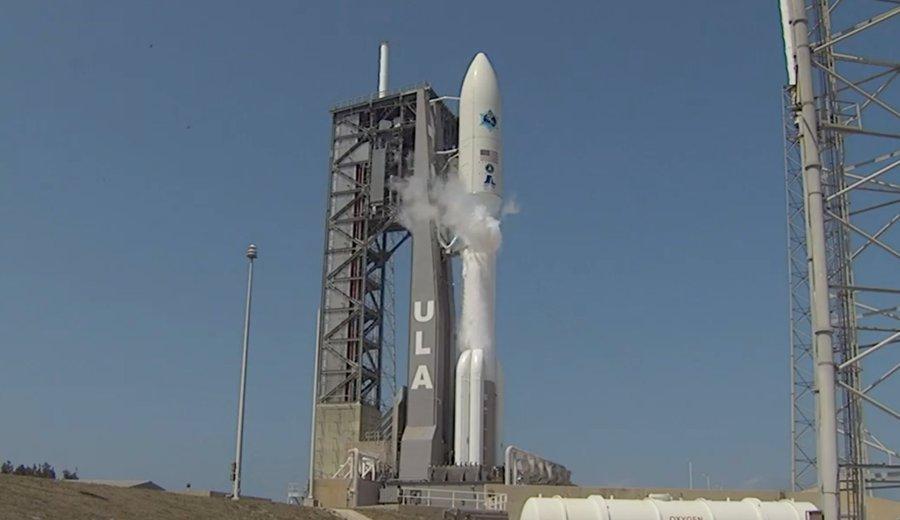
CAPE CANAVERAL—A United Launch Alliance (ULA) Atlas V lifted off from Cape Canaveral AFS on March 26 to deliver the sixth and final member of the Advanced Extremely High Frequency (AEHF) secure communications satellite network into orbit for the U.S. and allies’ national security agencies.
The 20-story rocket, outfitted with five side-mounted solid rocket boosters provided by Northrop Grumman, lifted off at 4:18 p.m. EDT from Space Launch Complex 41. The launch was delayed 1-hr., 21 min. to resolve a problem with ground support equipment.
AEHF-6 is the first payload to fly for the newly designed U.S. Space Force, though the official renaming of the Cape Canaveral launch base has been postponed due to personnel restrictions and work reassignments stemming from COVID-19 restrictions.
In accordance with Defense Department, state and local guidelines, ULA and the 45th Space Wing, which conducted the launch, scaled down the size of their teams, reconfigured workstations so people would be farther apart and closed the base for public launch viewing.
AEHF-6 will complete the constellation that follows the five-member Milstar Satellite Communications System, launched from 1994-2003. The networks, which are compatible, provide the president, secretary of Defense, armed forces and allies with assured, survivable communications with a low probability of interception and detection. The satellites operate from geostationary orbit some 22,000 mi. (35,500 km) over the equator.
Procured through what was the Air Force Space and Missile Systems Center, the AEHF spacecraft cost more than $1 billion apiece, not including launch services aboard Atlas V rockets. The AEHF satellites, built by Lockheed Martin, are expected to be operation for at least 12 years.
The launch of AEHF-6 was the first of nine national security space missions scheduled to fly this year. The launch marked the 500th flight of an Aeroject Rocketdyne RL10 engine, which powers the Atlas V’s upper stage. ULA plans to continue using RL10s for its Vulcan family of rockets, as will Northrop’s Omega rocket and NASA’s Space Launch System.





